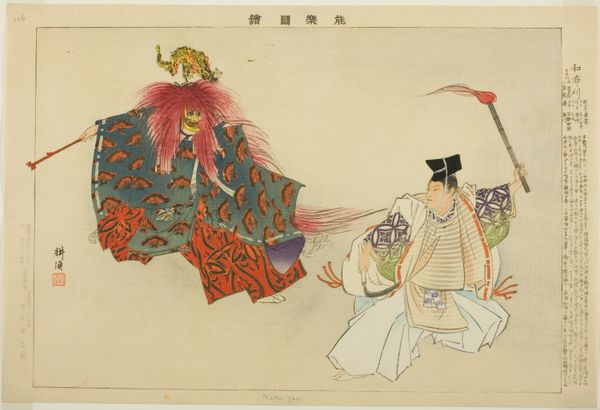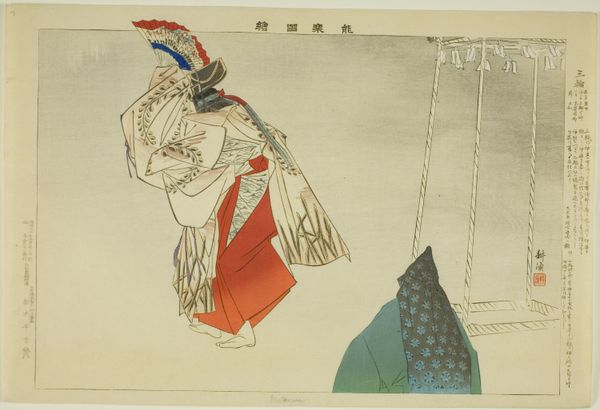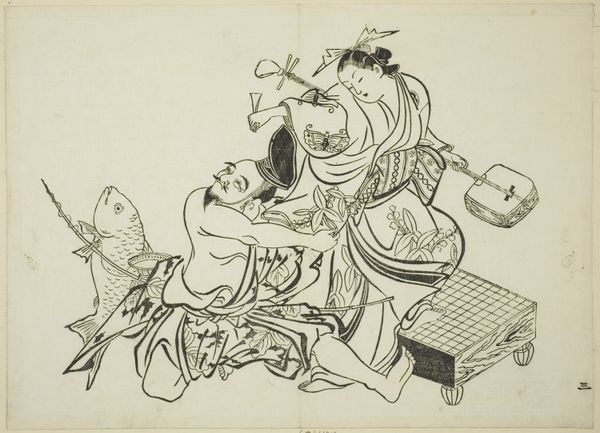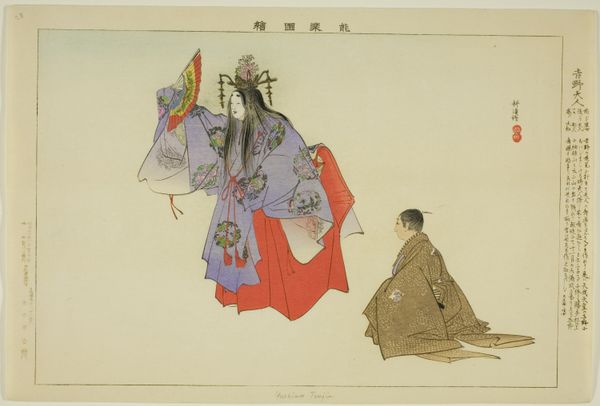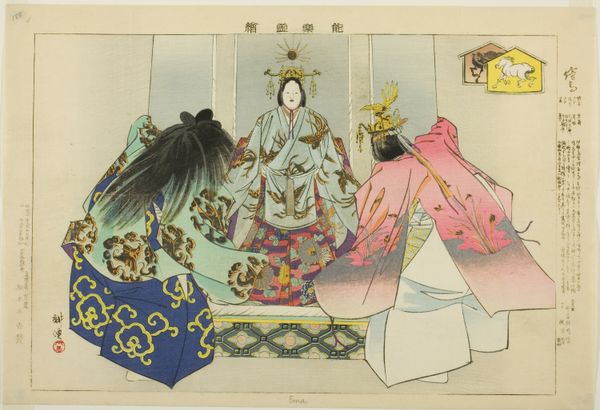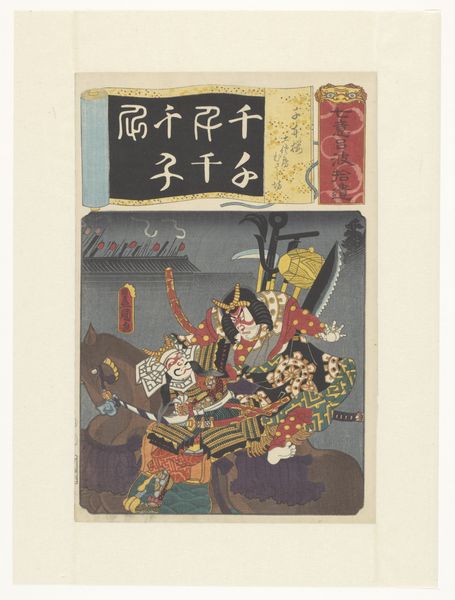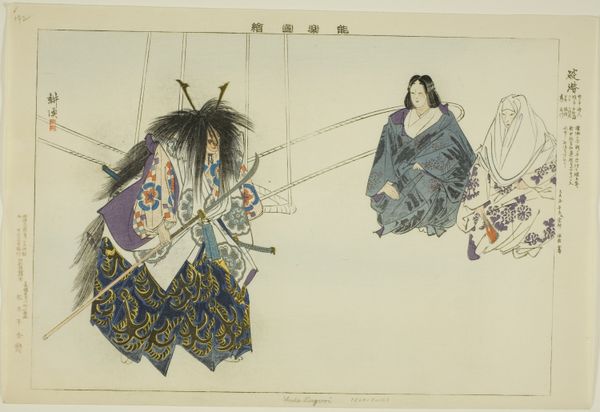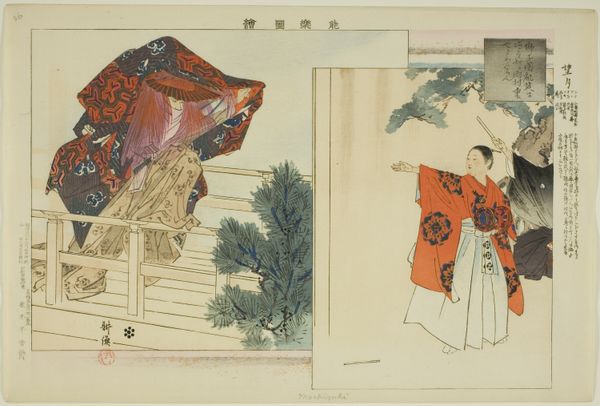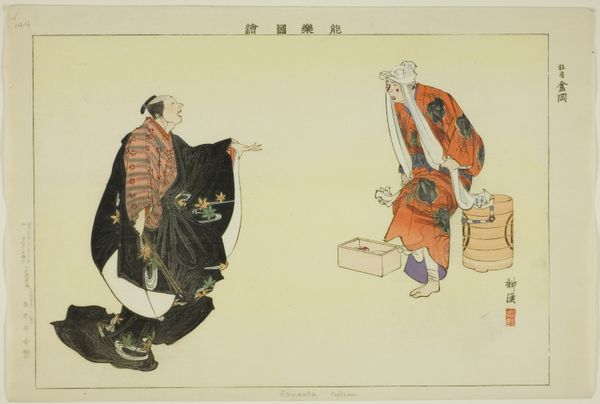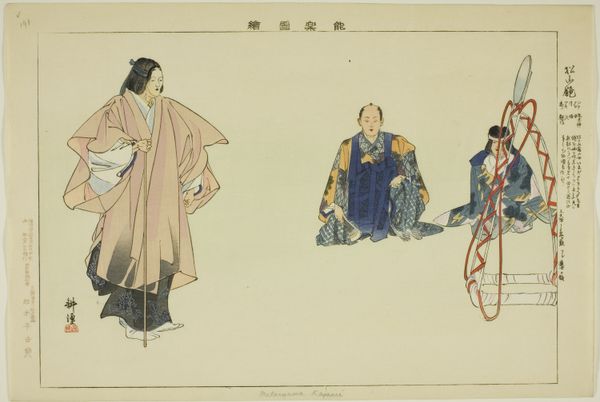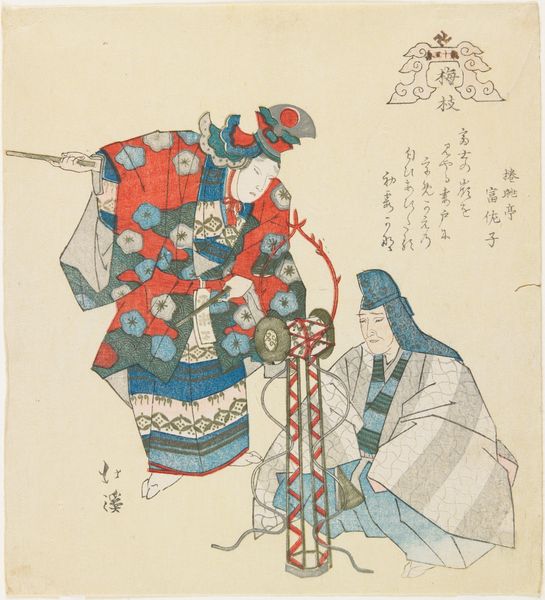
Nezame, from the series "Pictures of No Performances (Nogaku Zue)" 1898
0:00
0:00
Dimensions: Approx. 25.2 × 37.4 cm (10 × 14 4/3 in.)
Copyright: Public Domain
Editor: Here we have "Nezame, from the series 'Pictures of No Performances (Nogaku Zue)'," a woodblock print created in 1898 by Tsukioka Kōgyo. The figures are really striking, and I'm immediately drawn to the detailed patterns in their robes. What strikes you about this piece? Curator: Immediately, I'm drawn to the labor and materiality of the woodblock printmaking process. The creation of this image depended on many skilled hands - the artist, carver, printer and publisher. How might we analyze this as a manufactured commodity? Editor: That's a great point. It’s not just the artistry but also the entire production system. Do you think that was a common view in Japan at the time? Curator: Well, ukiyo-e prints were indeed mass-produced. The value often rested not just on the artist's name, but on the quality and skill of the artisans involved in each stage of production. Consider the social context – these prints weren't high art, but commodities for a growing urban population, reflecting the realities of Edo-period society and its changing consumption patterns. The publishers needed a reliable and constant system of creation, and distribution to grow this industry. Editor: That’s fascinating. I hadn't considered the impact of consumerism on even traditional art forms. Now I am seeing how the subject (Noh drama) and the medium are interlinked and represent the common people consuming arts and culture. Curator: Precisely. Analyzing this work through its materials, its method of production, and its context as a mass-produced object offers insights beyond just aesthetics or subject matter. Editor: I will certainly remember that next time! Thanks for sharing the materialist perspective. Curator: A fruitful perspective to adopt in examining most things, and I think it served well to analyze "Nezame".
Comments
No comments
Be the first to comment and join the conversation on the ultimate creative platform.
